
33 minute read
Reimbursement Page
by AOPA
Adjusting to Medicare Changes
How will prior authorization and competitive bidding impact O&P facilities?
Editor’s Note—Readers of
Reimbursement Page are eligible to earn two CE credits. After reading this column, simply scan the QR code or use the link on page 17 to take the Reimbursement Page quiz. Receive a score of at least 80 percent, and AOPA will transmit the information to the certifying boards. 2020
EARN 2 QUIZ ME! BUSINESS CE CREDITS P.17
YOU WILL BE HARD PRESSED to find someone who is not happy to see 2020 in the rearview mirror. The COVID-19 public health emergency has impacted all aspects of our daily lives. Businesses have been forced to adjust their operations to be successful in an environment where personal interaction may no longer be an option. Telehealth has taken on a new level of importance—for O&P providers as well as their physician partners and other members of the rehab team.
In addition to dealing with the continuing challenges associated with providing patient care during a global pandemic, O&P providers are faced with two new Medicare programs that will have a significant impact on their businesses in 2021: prior authorization and competitive bidding.
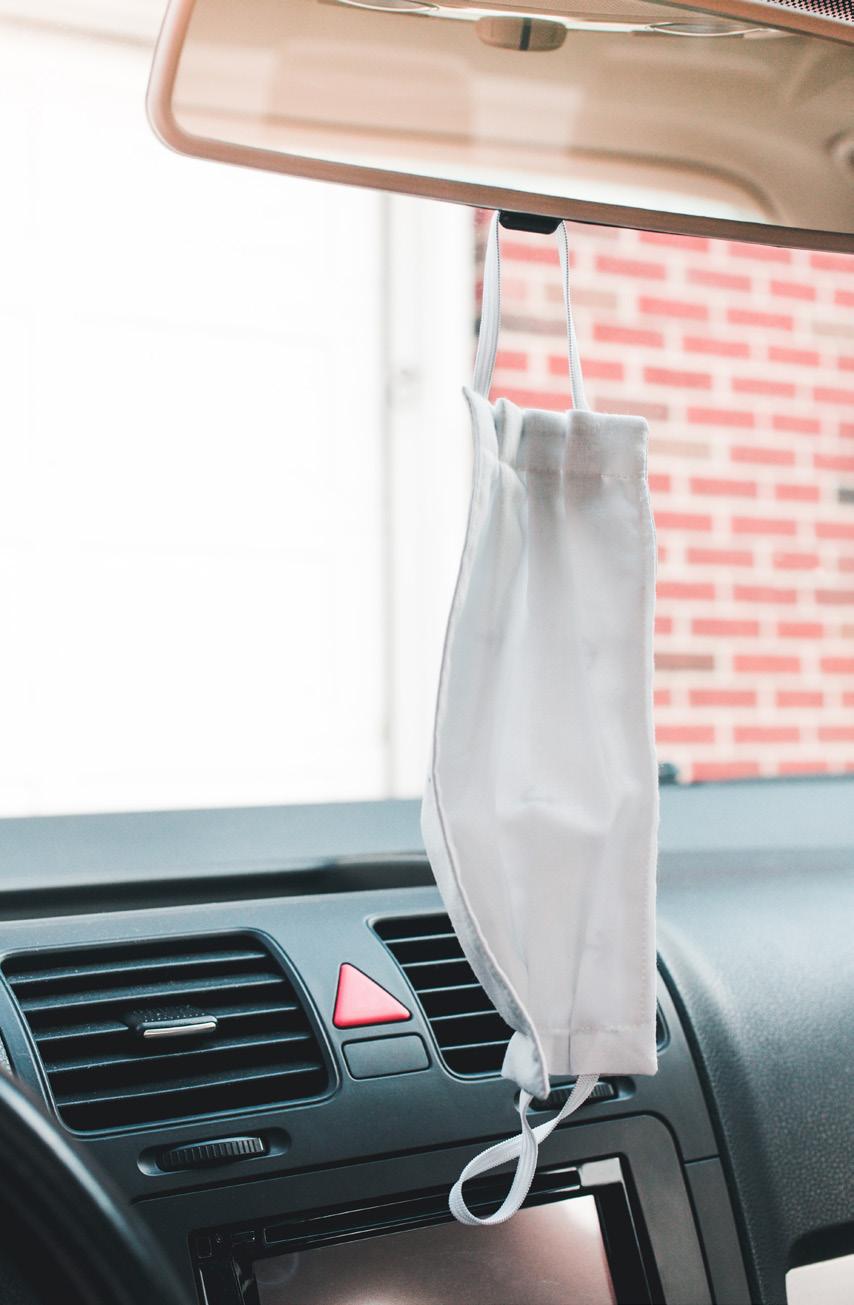
Prior Authorization
Prior authorization is not a new concept, as it has been utilized by private payors for years. Medicare has been slowly introducing prior authorization into its claim processing program, but O&P was not part of the program until recently.
Last year, Medicare implemented limited prior authorization for six lowerlimb prosthesis codes (L5856, L5857, L5858, L5973, L5980, and L5987) in four states (Pennsylvania, Michigan, Texas, and California) on September 1. The program was implemented nationwide for claims with dates of service on or after Dec. 1, 2020.
Detailed information about Medicare prior authorization for lower-limb prosthesis codes can be found on the AOPA website at www. aopanet.org/legislative-regulatory/ prior-authorization. Highlights of the program include the following: • Claims that receive an affirmative prior authorization decision will generally not be subject to additional audit or medical review but may be denied for technical reasons (e.g., no proof of delivery, delivery of services not included in the prior authorization request, etc.). • Effective for claims with dates of service on or after Jan. 1, 2021, products coded using one of the six codes subject to prior authorization must be code-verified by the pricing, data analysis, and coding contractor. • In general, Medicare will provide a prior authorization decision within 10 business days of receipt of the request. Expedited prior authorization requests will be processed in two business days. • There are no limits on prior authorization resubmissions, but each resubmission will result in additional processing time. • Prior authorization requests will be assigned a unique tracking number (UTN) that must be submitted with the claim. UTNs will be assigned for both affirmative and nonaffirmative prior authorization decisions.
During the four months since the initial, four-state pilot program began, we have learned a few important lessons. In general, Medicare prior authorization has been successful, with limited instances of delays in access to care and efficient, two-way communication between providers and the durable medical equipment Medicare administrative contractor (DME MAC) medical review staff.
Medicare prior authorization regulations require the DME MACs to process standard prior authorization requests (PARs) within 10 business days and expedited PARs within two business days. As part of the prior authorization pilot program, the average DME MAC PAR processing time was four business days, well below the 10-day threshold. Jurisdiction B reported that two thirds of the PAR requests it received were approved upon initial submission. Jurisdiction C reported that more than half of the PAR requests it received were approved upon initial submission, and both Jurisdictions B and C reported that almost all of the PAR resubmissions they received were approved on the first resubmission. The DME MACs reported that there has been excellent communication between providers and DME MAC staff throughout the prior authorization process, and they will continue to provide important education to providers as the program moves to nationwide implementation.
The majority of nonaffirmative decisions during the pilot program were due to insufficient or missing clinical documentation that supports the medical necessity of the components provided. It is important to remember that the six lower-limb prosthesis codes that require Medicare prior authorization are all K3 functional level components, and four of them incorporate microprocessor technology into their design. Documentation from both the prescribing physician and the prosthetist must support the medical need for the selected components.
AOPA’s coding and reimbursement team is following the progress of the Medicare prior authorization program closely and has developed multiple resources to help AOPA members have a positive prior authorization experience. A section on AOPA’s website dedicated to this topic, www.aopanet.org/legislative-regulatory/ prior-authorization, features resources such as a Medicare prior authorization video presentation, information about how the program works, and access to the AOPA Medicare Prior Authorization Tracking Tool (AMPATT). The AMPATT, a user-friendly resource, allows providers to easily organize and track their prior authorization requests. The AMPATT can be used as an internal resource but also can be used to provide valuable feedback to AOPA regarding potential issues with the Medicare prior authorization program.
AOPA believes that Medicare prior authorization, if implemented properly, will be beneficial to Medicare providers and beneficiaries alike. AOPA is hopeful that the program will continue to be successful as it is implemented on a national scale.

Competitive Bidding
Competitive bidding of select offthe-shelf (OTS) orthoses is another Medicare program that will impact O&P businesses in 2021. This program has been outlined in regulation for more than 10 years and was previously implemented for multiple categories of durable medical equipment.
While OTS orthoses have been eligible for inclusion as a product category subject to Medicare competitive bidding since the beginning of the program, Round 2021—implemented on Jan. 1, 2021—is the first time OTS orthoses have been included in the program. Currently, Medicare competitive bidding of OTS orthoses is limited to 16 spinal orthosis codes (L0650, L0450, L0455, L0457, L0467, L0469, L0621, L0623, L0625, L0628, L0641, L0642, L0643, L0648, L0649, and L0651) and seven knee orthosis codes (L1830, L1812, L1830, L1836, L1850, L1851, and L1852).
Round 2021 initially included all durable medical equipment, prosthetics, orthotics, and supplies product categories previously included in Medicare competitive bidding as well as the 23 OTS orthosis codes not previously included in competitive bidding. However, after the bidding process was completed, CMS determined that additional savings would not be achieved by continuing competitive bidding for the previous product categories as Medicare fees had already been adjusted based on the single payment amounts (SPAs) established through previous rounds
of Medicare competitive bidding. As a result, CMS elected to remove all of the previous product categories from future competitive bidding except for the selected OTS orthoses that had not had their Medicare fee schedules adjusted based on previous rounds of competitive bidding.
After an extensive bid submission process, CMS, on Oct. 27, 2020, announced the SPAs for the 23 OTS orthosis codes in each of the Medicare competitive bidding areas (CBAs). This was followed by the announcement of contracted suppliers for each CBA on Nov. 20, 2020. The Medicare competitive bidding program for the 23 OTS orthoses began on Jan. 1, 2021.
It is likely that the competitive bidding implementation has had an impact on your business. Effective for dates of service on or after Jan. 1, 2021, unless you were selected as a contracted supplier through the Medicare competitive bidding program, you will no longer be able to provide OTS orthoses described by the 23 OTS orthosis codes included in Round 2021. Noncontracted suppliers who bill Medicare for one of the 23 OTS orthosis codes will have their claims denied. Medicare beneficiaries may only be held responsible for payment if they elect to sign an advanced beneficiary notice prior to receiving the orthosis.
In general, the SPAs for the 23 OTS orthoses represented an average reduction of 35 to 40 percent from the current Medicare fee schedule. Previous AOPA analysis of the competitively bid procedure codes indicated that only about 13 percent of the OTS orthoses paid for by Medicare were provided by traditional O&P companies so it was not surprising to see that the majority of competitive bidding contracts were awarded to medical equipment providers.
AOPA believes that O&P practitioners should be included in current exemptions from competitive bidding that are extended to other healthcare professionals such as physicians, nonphysician practitioners, and physical and occupational therapists. The O&P Patient-Centered Care Act, currently under consideration by Congress, includes a provision that would extend this exemption to O&P practitioners. While exempted practitioners must accept the SPA of competitively bid items, they are not restricted from providing services to Medicare beneficiaries. AOPA will continue to include this issue in its legislative priorities.
Joseph McTernan is director of reimbursement services at AOPA. Reach him at jmcternan@AOPAnet.org.
Take advantage of the opportunity to earn two CE credits today! Take the quiz by scanning the QR code or visit bit.ly/OPalmanacQuiz.
Earn CE credits accepted by certifying boards:
www.bocusa.org
FOLLOW US @AmericanOandP
Welcome to AOPA Connection, the one-stop-shop for all things AOPA.
Logging into AOPA Connection you will instantly have access to all your AOPA benefits, including:
• AOPAversity • Your Membership Record • Your Individual Profile • Event Calendar • Bookstore • Co-OP
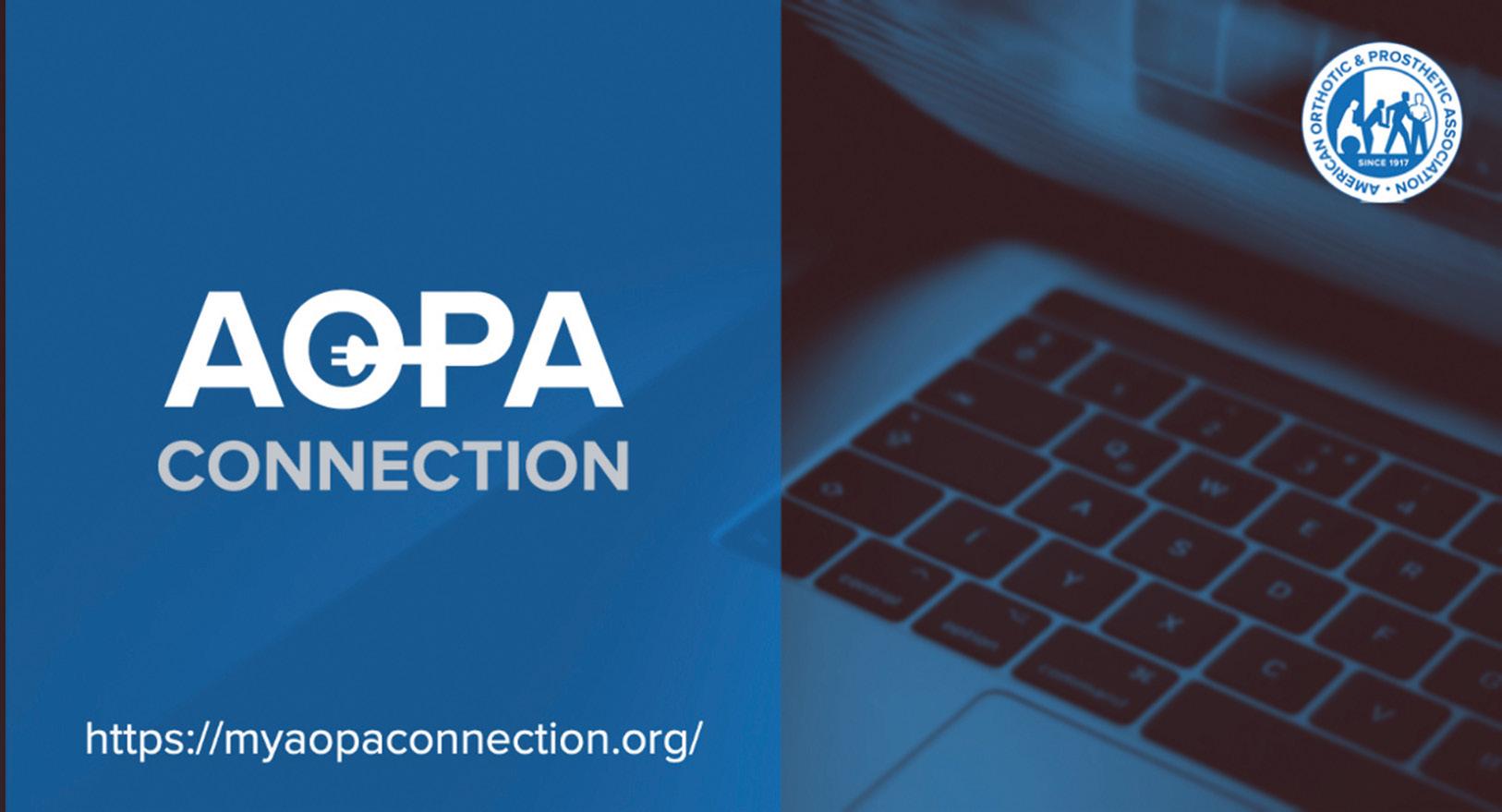
But, it doesn’t stop there! We are pleased to introduce a new benefit accessible through AOPA Connection, My O&P Community. In this online community of your O&P colleagues you can get guidance, share advice, have one-on-one and group conversations, and access resources.
MyAOPAConnection.org
NEW YEAR’S RESOLVE
After a tumultuous 2020, O&P facilities commit to revamped business practices and fresh approaches to patient care

By CHRISTINE UMBRELL
NEED TO KNOW • Many O&P businesses are starting 2021 with renewed energy and reworked strategies to boost business and revenues, compared to 2020. • Some facilities are anticipating a wave of patients as individuals who delayed patient care return to their regular appointments and seek out much-needed O&P intervention. • Companies are optimizing their telehealth strategies by incorporating lessons learned from virtual patient care during the early months of the pandemic. • Personal relationships will play a critical role in ensuring profitable partnerships between O&P facilities, allied healthcare companies, and payors.

AS WE BEGIN a new year, O&P stake holders are seeking steadier business and increased revenue compared to what they experienced in 2020.
This year, “we are looking to pull ourselves out of the COVID bubble,” says Spencer Doty, MBA, CPO, president of Active Life Inc. in Glendale, California. “We have to start to move beyond” the reactionary response to the COVID-19 pandemic and take a more proactive approach, he says. The events of 2020 forced Active Life—and most facilities—to modify processes and procedures. Now, it’s time to evaluate the lessons learned, embrace the new technologies that O&P relied on during the pandemic, and jettison old systems, processes, and procedures that are no longer helpful.
Doty acknowledges that some facilities struggled to remain viable during the pandemic, but he believes O&P weathered the storm better than a lot of other professions. In many cases, the “strong got stronger, and the weak got weaker,” he says. Those facilities that took a flexible approach, embraced technology and telehealth, and fostered relationships with patients and referral sources in 2020 were the most successful.
Over the next 12 months, O&P owners and managers predict the profession may see an influx of patients, staffing challenges, innovative approaches to patient care, new relationships to foster, and ongoing reimbursement issues. They plan to embrace these challenges and opportunities with the goal of optimal patient care while keeping their businesses solvent. Here, O&P professionals share their advice for the new year.

handle potentially more patients,” while maintaining adherence to stricter safety protocols, such as longer time between appointments to allow rooms, says Sabolich. He suggests months. At EastPoint Prosthetics and Orthotics in Raleigh, North Carolina, Brent Wright, CP, BOCO, anticipates an uptick in pediatric orthotic patients—a population that experienced a dip in
Scott Sabolich, CP, and other stakeholders predict an influx in prosthetic patients in 2021, as recent studies indicated an increase in amputations last year. Prepare for a Wave of Patients study before the pandemic noting an Delayed patient care led to an upward trend in amputations in the increase in amputations in 2020, says United States, concluding that after Scott Sabolich, CP, owner of Sabolich a two-decade decline in lower-exProsthetics & Research and chief tremity amputations, the United executive officer of Ottobock Patient States may now be experiencing a Care, so he expects to see a wave of reversal in that progress. patients with amputations this year. “We’ll need to figure out how to Scott Sabolich, CP for sanitation of patient-care rooms and reduced capacities in waiting new patients in 2020.
He points to international studies that O&P facilities facing an increased at the Amphia Hospital in the patient load may need to extend their Netherlands and the University of patient-care hours of operation, add Campania in Italy as evidence that weekend appointments, or make other a higher number of vascular and adjustments. “We’re going to have rush diabetic patients required amputa- hour through 2021,” he says. tions due to delay of care last year Beyond prosthetics, some O&P (see the Numbers section on page 8). professionals expect to see a rise in In addition, the CDC published a orthotic appointments in the coming Brent Wright, CP, BOCO
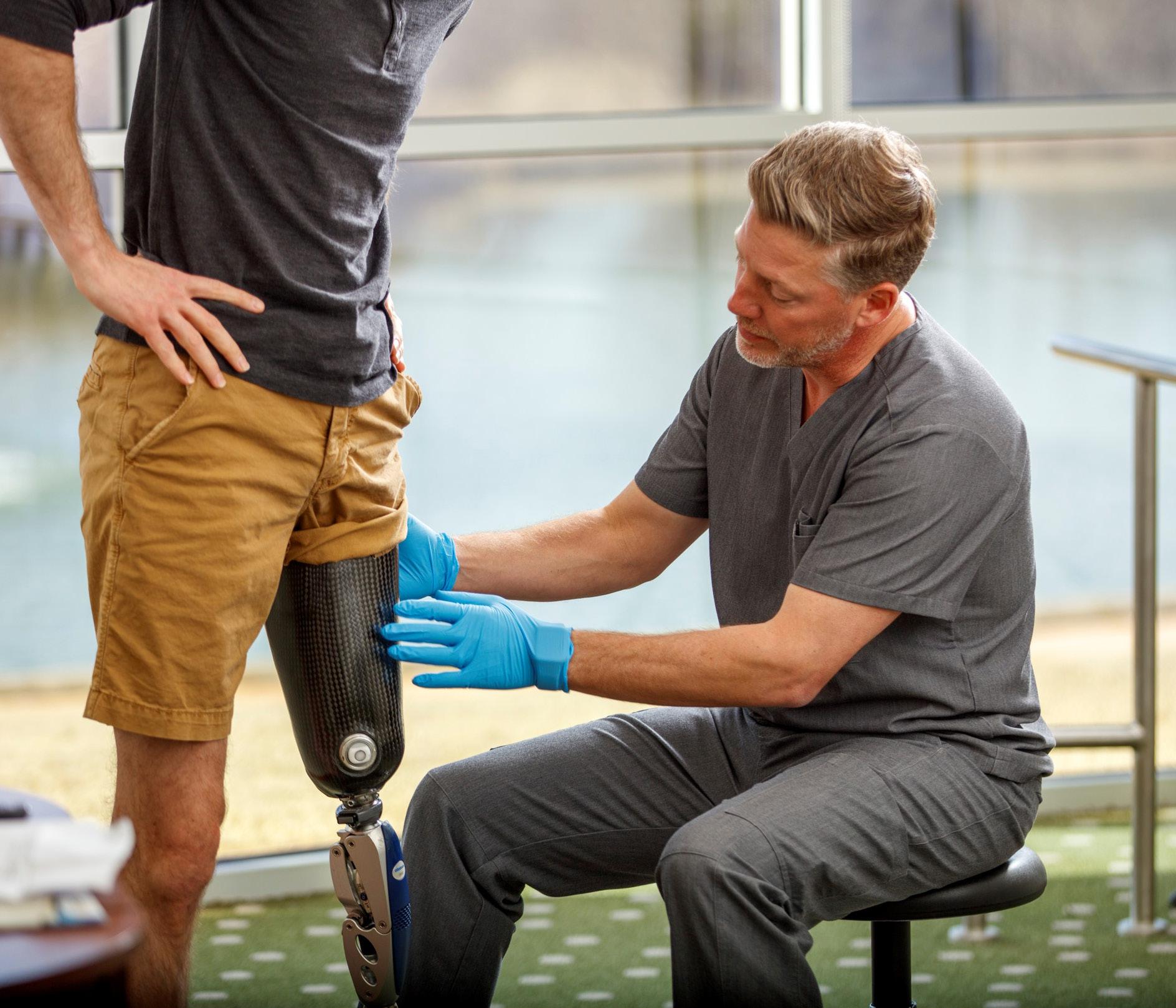
Kevin Matthews, CO, owner of Advanced Orthopedic Designs in San Antonio, agrees. He explains that the parents of his orthopedic pediatric patients—many of whom have special needs—were afraid to visit when the virus was spreading quickly, so they delayed or skipped appointments. Now, “I’m having parents come in with kids who should have had new AFOs made six months ago,” he says, noting that many of the prescriptions he is seeing are dated several months ago. “Parents are scared—but the kids are growing and need new orthoses.”
Kevin Matthews, CO
Some O&P professionals, however, caution that 2021 patient volumes may continue to be impacted by the COVID-19 crisis. Steve Filippis, president of Wright & Filippis, believes this year’s numbers will be much better than 2020 but may struggle to get back to 2019 volumes. “Some of the delays of care from 2020 might mean loss of revenue rather than delayed patient care,” he says, noting that patients who put off orthotic care during the pandemic may simply decide to forgo getting their prescribed orthotic device. In addition, prosthetic patients who delayed care and lost their ability to ambulate due to inactivity or using a wheelchair for the past nine months may no longer qualify for services.
Clinicians at EastPoint P&O travel to see many of their patients at their homes or assisted living facilities, using mobile vans equipped with appropriate tools and supplies.
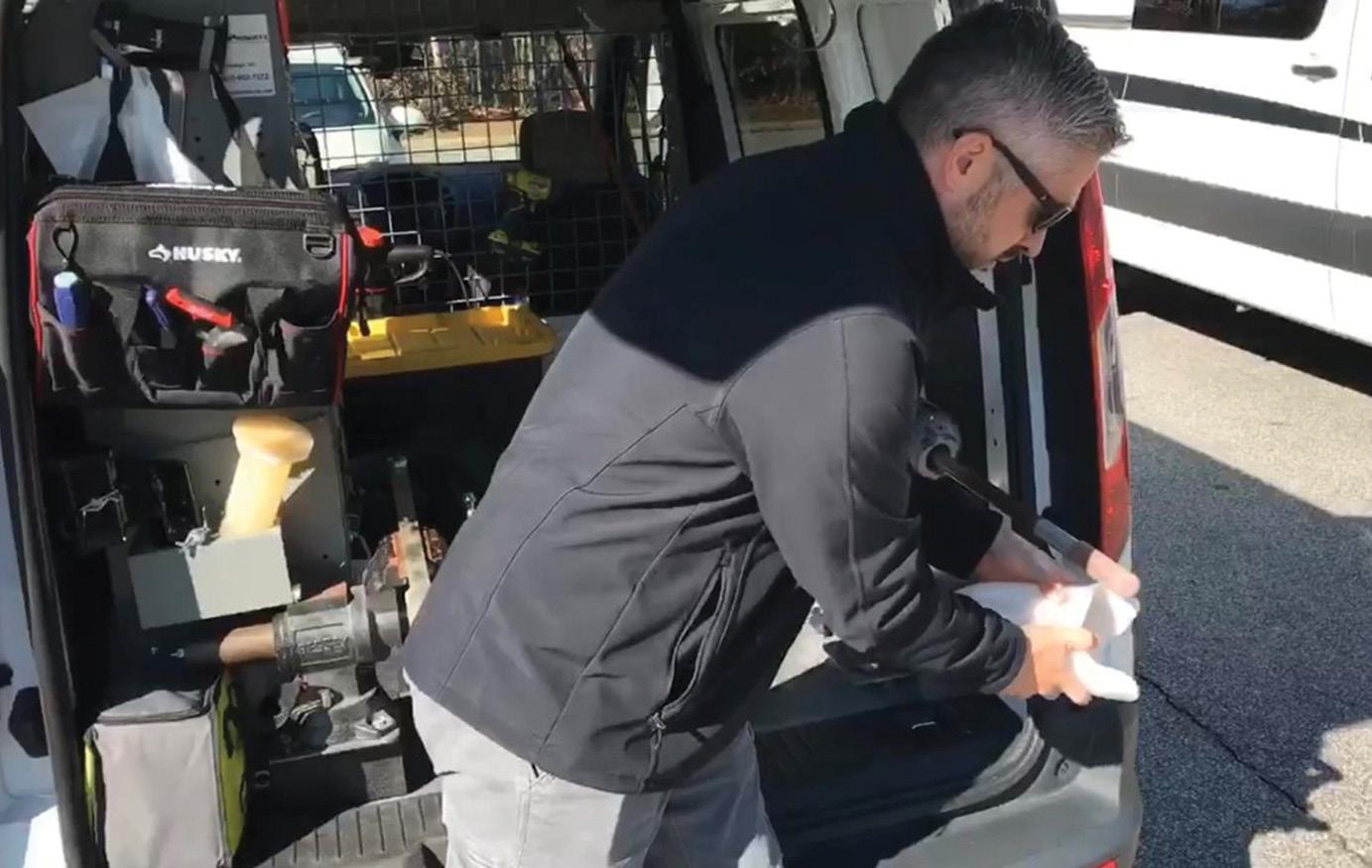
Take a Flexible Approach to Staffing O&P managers and owners may need to make creative—and sometimes difficult—decisions during 2021. “We’ll be busier, with more restrictions from Medicare, seeing more patients, with less staff” because some employees will need to take leave to quarantine due to coronavirus exposures or to care for family members, predicts Sabolich. “We as O&P facilities need to be on the defense, not just for COVID, but for the business interruption it will cause when clinicians have to take two-week breaks. So, we’ll need to be flexible. Even more than 2020, 2021 will be the year of the pivot.”
Last year, the pandemic affected Wright & Filippis’s ability to provide services because of stay-at-home mandates and some employees quarantining. Since March 2020, 120 of the company’s 320 employees have taken time off to isolate or quarantine. “Over the course of the pandemic, in an abundance of caution, we closed six of our locations due to COVID-19 exposure concerns,” explains Filippis. “While the number of clinical staff has remained steady overall, there has been some turnover among office staff who are new to the field. Some new office staff did not anticipate the level of direct patient interactions and potential COVID risk and decided to pursue other employment.”
Jeff Arnette, CPO
Some facilities will be reevaluating their staffing needs and deciding whether to hire or let go employees. At Advanced Orthopedic, Matthews was able to retain his full staff in 2020—despite instituting some four-day workweeks while continuing to pay full-time salaries. In 2021, he is hoping to avoid asking staff to take occasional days off as leave without pay—but he is open to that approach if the facility’s financials don’t improve.
To keep up morale and effectively solve problems, Jeff Arnette, CPO, owner of Oklahoma-based Progressive Prosthetics & Orthotics, recommends involving staff in decision making. He recently surveyed all of his employees—from new hires to experienced clinicians—to ask what they would do to improve the practice in the years ahead. “Talk to your employees about their ideas, and include them” when planning for the future, he says.
Embrace Creativity and Technology in Patient Care O&P facilities ramped up their use of telehealth dramatically last year. Now, they are analyzing what aspects of online care worked best to establish more defined rules and processes for virtual O&P patient care going forward.
Active Life clinicians will be more intentional about how they leverage the technology in 2021, says Doty. “We’re modifying and scaling back” use of virtual patient care in 2021 to better match the hands-on requirements of O&P, he explains. “We’re optimizing how we approach telehealth,” including reevaluating all of the ways the facility connects with patients virtually—such as simple phone calls, joint appointments with allied rehab professionals, and more.
He likens this approach to learning to use food-ordering apps: “PreCOVID, we didn’t use apps as much to order food,” he explains. During the pandemic, many restaurants developed apps—some of which are more userfriendly than others, and consequently, more popular among consumers. O&P companies likewise should ensure their telehealth experiences add value to their facilities for 2021 and beyond, says Doty.
EastPoint clinicians also will focus on telehealth this year. Wright found that, in many cases, initial evaluations can be performed virtually, particularly for pediatric patients and patients in assisted living facilities. “It gives us an idea of what the patient needs so that when we go in to make a cast or device, we’re better prepared,” says Wright.
In addition, EastPoint will continue growing its mobile business—a key
differentiator in the facility’s business model, and one that contributed to the facility’s resilience during the pandemic, says Wright. EastPoint has 17 mobile vans fully equipped to allow clinicians to travel to patients’ homes or assisted living settings. Since the pandemic began, clinicians have been suiting up in personal protective equipment to visit housebound patients and those who were afraid to leave their homes. In many cases, clinicians are treating patients on their front lawns, decks, and porches—a safer choice than inside enclosed spaces.
Steve Filippis
Many O&P facilities plan to embrace new technologies when providing devices to their patients. At Wright & Filippis, “we will focus on quality custom care, and high-tech solutions” when appropriate, says Filippis. “High-tech is not just for prosthetics and microprocessor knees and feet, but for pediatric cranial shaping helmets, orthoses like the C-Brace,” and scanning technology for all aspects of O&P care.
At EastPoint, clinicians will leverage new technologies during fabrication. The facility 3D prints some of its devices and found that during the pandemic, being able to offer devices that were 3D printed decreased lead times and prevented postponed appointments due to shipping delays. “Having the ability to fabricate or partner with companies that did 3D printing” was a positive for patients— so EastPoint will build on these efforts this year.
Foster Personal Relationships To succeed in 2021, building and maintaining personal relationships with patients and referral sources will be critical, says Arnette. These relationships will inspire loyalty and retention. Arnette believes in a back-to-basics approach in a patient-driven model of care, ensuring patient calls are returned immediately and paperwork is processed quickly. This approach will inspire patients to become advocates, he says.
Personal relationships also are the key to successful referral source and payor relations, says Arnette. Progressive P&O is seeking out— and winning—new contracts, then following up by providing in-service programs so that employees at HMOs, PPOs, and other partners improve their understanding of O&P intervention. “Know your referral bases and maintain them,” Arnette says. “Make sure your referral sources know you and your company personally.”
Keeping referral sources informed of a facility’s status is very important, according to Filippis. “Part of marketing is reassuring referrals that you are open for business and following CDC policies” for safe and quality patient care, he says. Clinical staff, in particular, should foster positive relationships with physician and referral sources.
Of course, more of the one-on-one interactions needed to build relationships will be taking place virtually. Given this trend, some facilities are rethinking their marketing approaches to reach more people while containing costs. One of Matthews’ priorities for 2021 is to leverage social media and website tools to reach current and potential patients, and referral sources—for example, by placing targeted ads on Facebook and similar platforms. “Then, when it’s safe— perhaps in the summer—we’ll market in person again.”
Focus on Lasting Revenues and Impactful Partnerships In the new year, companies should be focusing not just on revenues, but on “lasting revenues”—opportunities that have long-term potential, says Doty. “You see consolidation between health plans, physician groups—so you need to seek out revenue sources that tap into these larger pools.” For example, he suggests O&P facilities pursue partnerships with larger physician groups or medical networks, rather than individual physicians.
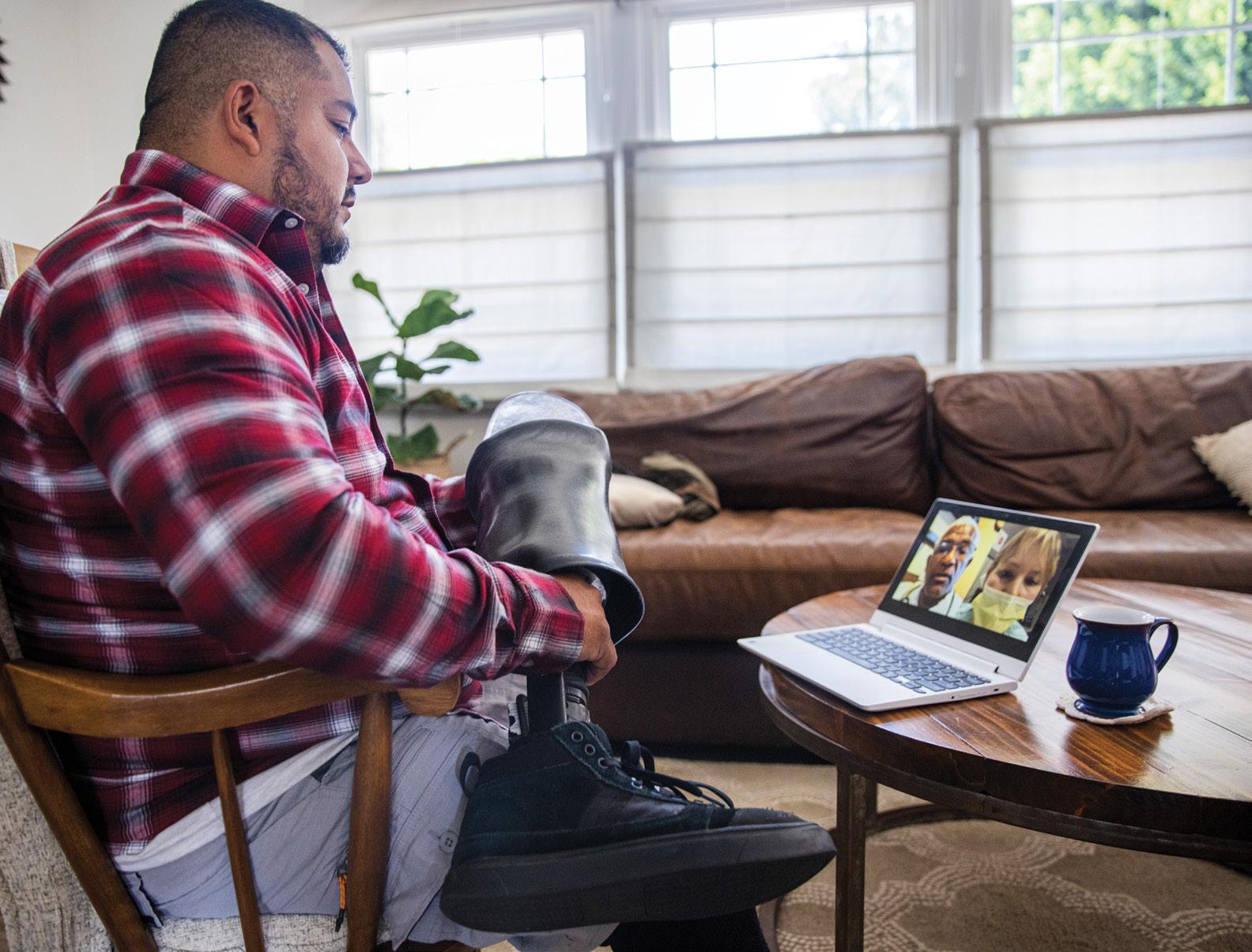
Finding ways to boost lasting revenues will be particularly important given the increased scrutiny expected from payors. In the past year, the postaudit review process from Medicare has been particularly difficult to navigate, with audits increasing three- or fourfold in the past two years, according to Filippis. As COVID-19 becomes less of a threat, he expects that Medicare oversight will become even more oppressive, because both Medicare and other payors will be looking for ways to save money lost to the pandemic. He emphasizes the importance of accurate and complete documentation because payors “will be looking for people who cut corners.”
Spencer Doty, MBA, CPO
Developing new ways to increase new referrals and maintain revenue will be particularly important, as well as accounting for reduced reimbursements resulting from competitive bidding, says Filippis. “You have to do more now to make up for revenue that is being lost,” he says. “It does not matter if you were awarded a bid, like Wright & Filippis, from Medicare for orthotics or you did not bid; physicians’ referrals will change for most providers in competitive bidding areas,” he says. He emphasizes that it’s difficult to forecast exactly how much additional business Wright & Filippis will receive because of competitive bidding, and how the increased audits will impact the company’s bottom line. “It’s challenging to make sure your costs meet your reimbursement,” Filippis says.
Doty recommends embracing— rather than fighting—the consolidation occurring in the greater healthcare world, given the growth of independent physician associations (business entities organized and owned by a network of independent physician practices) and other large medical groups. “We have to move beyond if they are ‘good’ or ‘bad’—they’re happening,” he explains. “There are a lot of new horizontal and vertical integrations, and new referral sources. O&P needs to keep up with the consolidation and growth throughout regular healthcare,” says Doty, “and be positioned to support the demand and interests of our referral partners.”
Looking specifically at consolidation trends within O&P, Filippis believes the profession will likely see increased mergers and acquisitions in 2021, as small facilities look to partner with larger facilities, manufacturing partners, or hospital systems in a challenging financial environment.
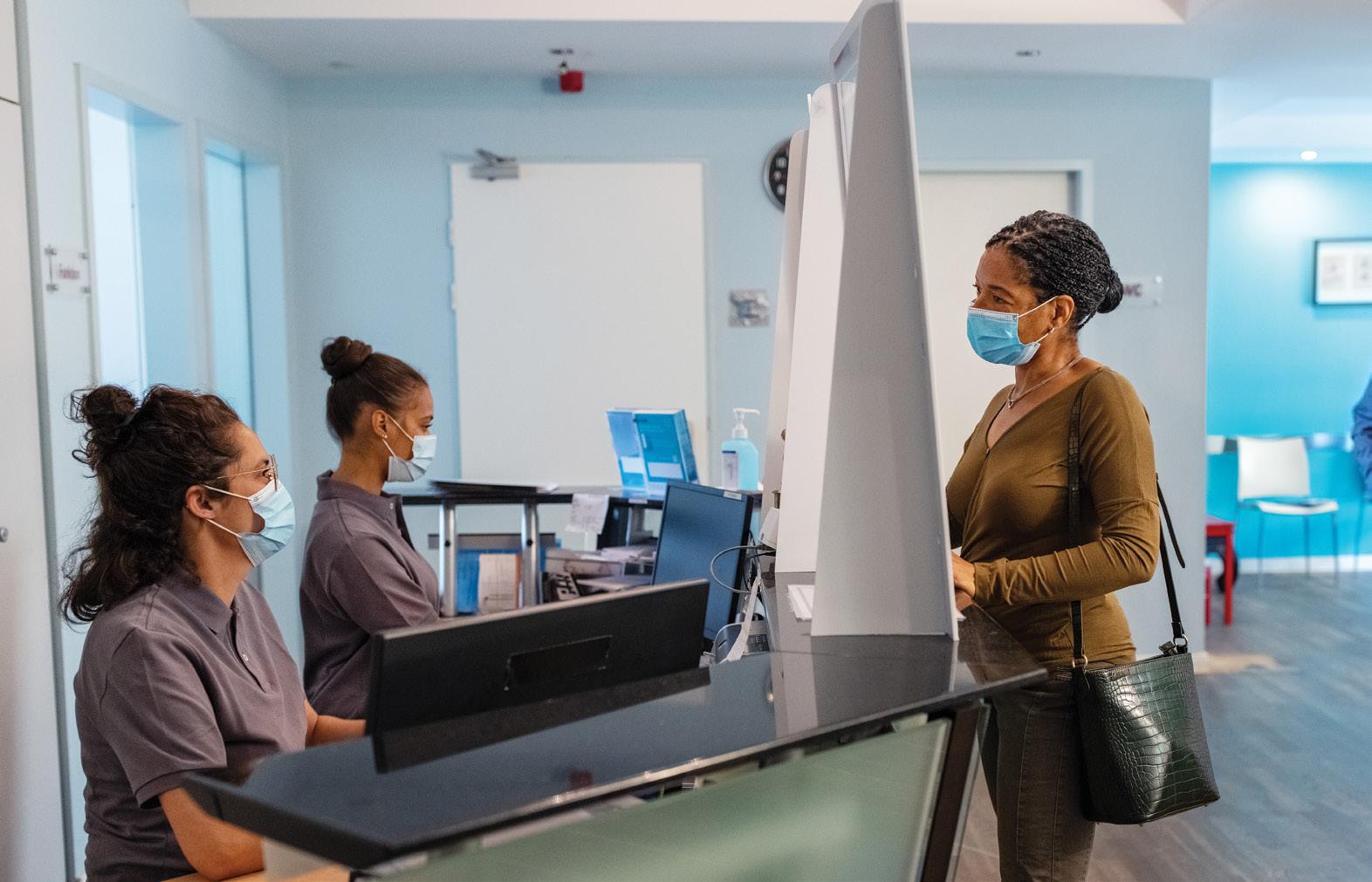
Promote the Value of O&P Intervention During the early days of the pandemic, many O&P facilities worked hard to educate state and local regulators on their value as part of the healthcare team. AOPA clarified the point that O&P workers are essential personnel. Expanding these advocacy efforts will be important in 2021.
As a new president and administration take the reins of U.S. government this month, O&P stakeholders will need to step up their efforts to inform legislators and regulators about the role of certified O&P clinicians within the healthcare team. Individual facilities should work to educate local regulators and lawmakers, suggests Arnette. “Know your market better than the next guy, and know your needs and wants,” he explains. “Become politically active, and get involved in advocacy efforts and educating CMS, local representatives, and national representatives.” O&P stakeholders can look to the AOPA Co-OP for state-by-state advocacy-related information.
On the national level, AOPA and allied health organizations will be advocating to advance the O&P Patient-Centered Care Act this year, and pushing to ensure providers are recognized as essential healthcare workers. Details on these efforts are available on the AOPA website.
Working together to promote the profession will help position O&P in the spotlight—to the ultimate benefit of patients in 2021. “The O&P industry should remain open to looking at how others perceive us,” says Doty, “and respond accordingly.”
Christine Umbrell is a contributing writer to O&P Almanac. Reach her at cumbrell@contentcommunicators.com.
npdevices.com IT’S ALL ABOUT FUNCTION.
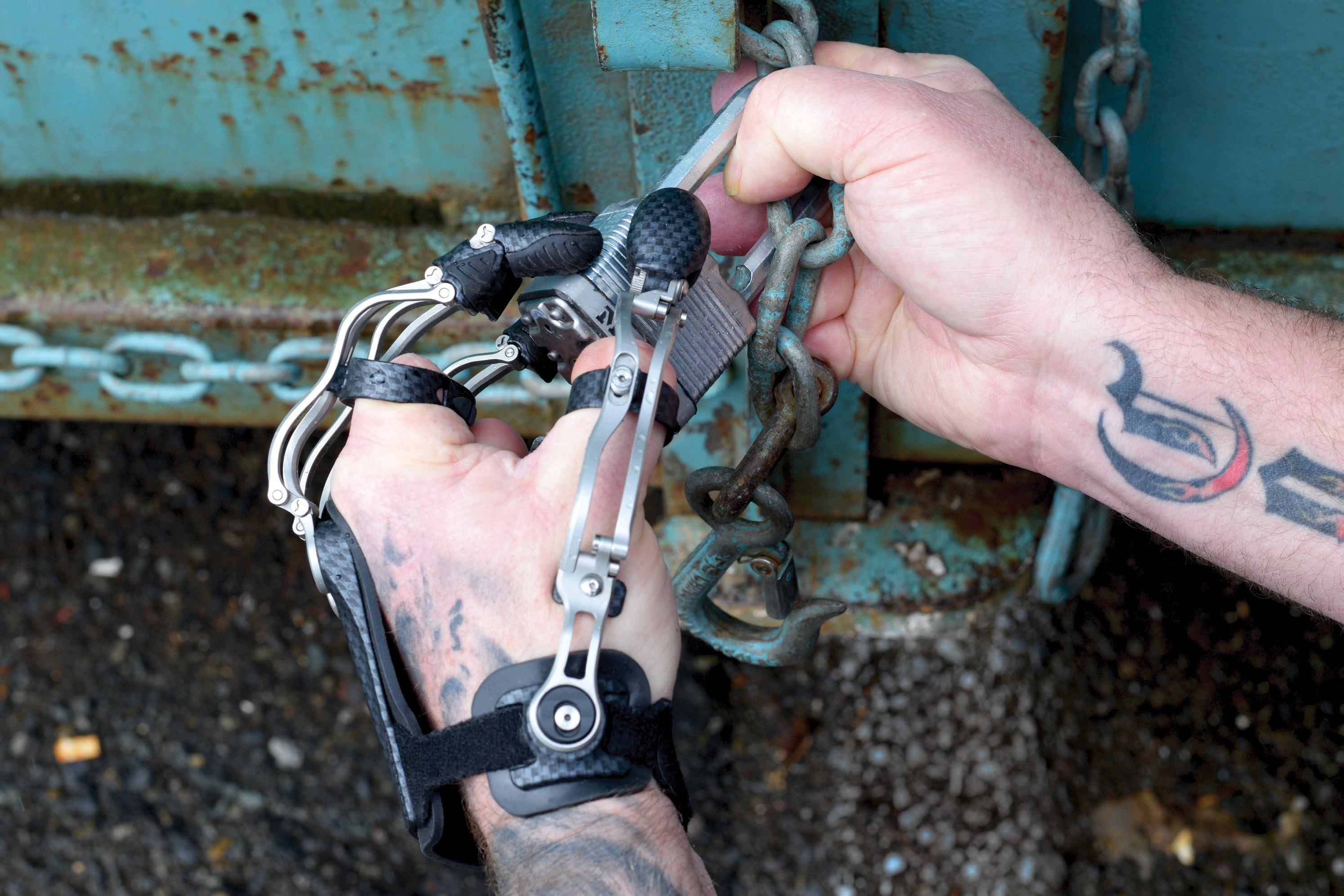
Erik wears four MCPDrivers and a ThumbDriver.
Naked Prosthetics now offers four finger prostheses: PIPDriver, MCPDriver, ThumbDriver, and GripLock Finger.
PIPDriver™
Custom device driven by an intact PIP joint with enough residuum to engage the ring.
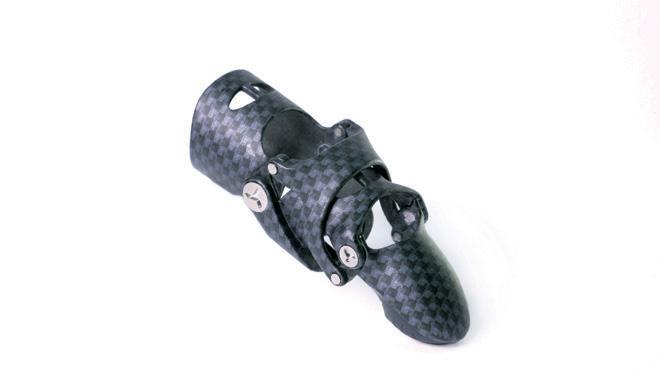
ThumbDriver™
Custom device driven by intact MCP and CMC joints in the thumb. However, patients with more proximal amputations may still benefit from the device as long as their residuum can engage the ring.
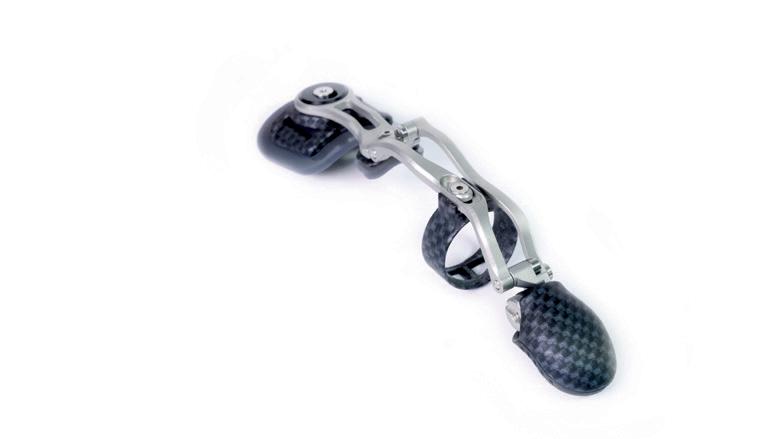
MCPDriver™
Custom device driven by an intact MCP joint with enough residuum to engage the ring.
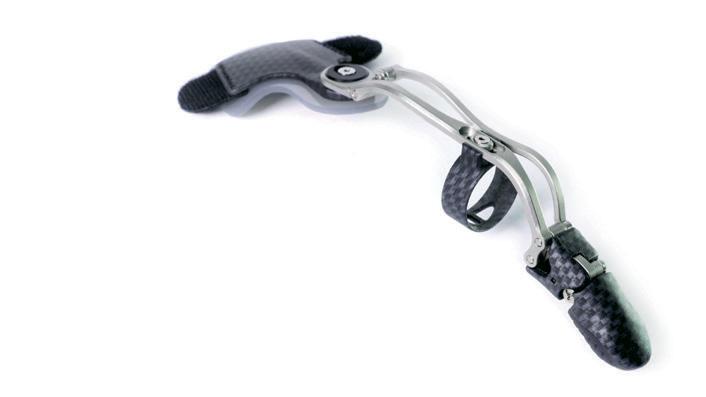
GripLock Finger™
Elegant solution for amputations proximal to the MCP joint. Positioned using a surface or their opposing hand, and then return to full extension by releasing the dorsal pawl or moving to the full flexion release point.
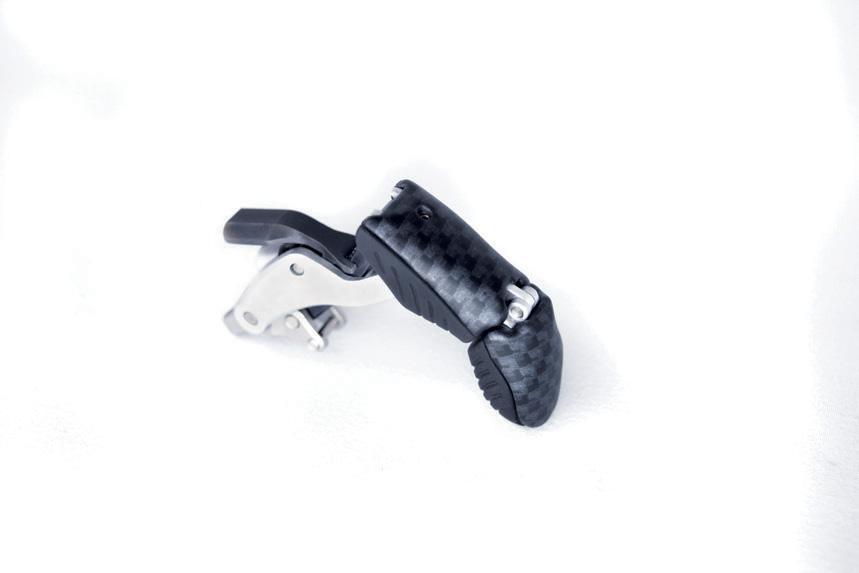
O&P and the Coronavirus Relief Deal

By MICHAEL COLEMAN
How O&P businesses may benefit during tax season and beyond from the newly enacted pandemic relief package

THE END OF 2020 delivered much needed good news for O&P facilities and other small businesses across America, as Congress approved legislation to extend the Paycheck Protection Program (PPP) and relax federal tax requirements.
The changes are part of the larger Consolidated Appropriations Act, 2021, a 5,550-plus-page omnibus spending and coronavirus relief bill signed into law by President Donald Trump on December 27. The new legislation serves as a sequel to the Coronavirus Aid, Relief, and Economic Securities (CARES) Act passed in March 2020, when much was still unknown about the COVID-19 pandemic. Key provisions in the new legislation clarify tax rules and extend pandemic loan programs in ways that could be beneficial to O&P businesses.
NEED TO KNOW
O&P business owners and managers should acquaint themselves with the December 27 coronavirus relief package that extends the Paycheck Protection Program (PPP) and relaxes federal tax requirements. The legislation clarifies that PPP expenses are deductible and forgives the use of PPP loans to include costs for personal protective equipment and other adaptive investments. The relief package also made advances from the Economic Injury Disaster Loan program deductible and included the right to deduct expenses paid with these types of loans. O&P companies may also benefit from an announcement that the IRS is allowing for a five-year net operating loss carryback. O&P stakeholders should consult with their tax and legal advisors to determine how the recent changes will impact their companies.
Clarifying the Rules Surrounding PPP Funds The new relief package finally settled a longtime point of uncertainty about whether businesses would be able to deduct expenses paid with PPP money they received last year.
“PPP expenses are definitely not taxable—that’s one of the biggest things that happened” with the implementation of the new law, says Tricia Bush, CPA, an accountant and wealth manager at Baltimore-based Bestgate Wealth Advisors, which counts numerous healthcare industry businesses among its clients. Those expenses will, in fact, be deductible, and businesses will not have to include the money as part of their gross income declaration on their 2020 federal tax returns.
The new law also allows and forgives the use of PPP loans to include, among other eligible expenses, the costs for personal protective equipment and other adaptive investments made to comply with “requirements established or guidance issued by the Department of Health and Human Services [HHS], the Centers for Disease Control, or the Occupational Safety and Health Administration, or any equivalent requirements established or guidance issued by a state or local government,” related to COVID-19 between March 1, 2020 and the end of the national emergency declaration, which HHS recently extended until the spring.
The law also mandates a simplified application for a next round of PPP-covered loans up to $150,000. These loans will be forgiven if the eligible recipient signs and submits to their lender a certification, including: • A description of the number of employees the eligible recipient was able to retain because of the PPP • The estimated amount of the covered loan amount spent by the eligible recipient on payroll costs • The total value of the loan.
Those taking PPP loans of more than $150,000 will still need to submit documentation and verification required under the first round of PPP loans. The new law authorizes a second PPP loan for companies with fewer than 300 employees that saw at least a 25 percent drop in revenue during any quarter in 2019 and 2020. The maximum loan amount under the new round of PPP is $2 million, compared to $10 million in the first PPP round.
“The second set of PPP loans coming out are tougher to get,” Bush says, noting the political backlash that occurred when news surfaced that wealthy companies that could easily weather the pandemic’s storm were nonetheless grabbing up free government cash. “They really want to focus the newer loans on businesses that really need them.” The new round also offers another chance to businesses that missed out the first time. “If you’re somebody who didn’t get the first round of money—let’s say you just missed the boat on it or you were distracted—you now have the opportunity to go back in and try to get your first PPP loan,” Bush says.
Updating Economic Injury Disaster Loan Deductions The new law offers another benefit that may be helpful to O&P companies: It scraps a requirement that PPP borrowers deduct the amount of Economic Injury Disaster Loans (EIDLs)—which aren’t required to be paid back—from their PPP forgiveness amount. So, the total PPP forgiveness won’t be reduced due to the EIDL advance. The change is retroactive to the enactment of the CARES Act, the initial PPP-granting legislation signed into law on March 27, 2020.
“Previously, if you got the $10,000 grant for the Economic Injury Disaster Loan, which was the advance that you didn’t have to pay back, you had to take that out before your [PPP] money was forgiven,” Bush explains. “So, before, you would not have gotten that $10,000. They undid that rule with the new bill.
AOPA’s Behind-the-Scenes Efforts Pay Off for O&P Business Owners
As Congress engaged in contentious negotiations over a second bill to help people and businesses stay financially afloat during the COVID-19 pandemic, AOPA was working behind the scenes on Capitol Hill to protect its members.
Justin Beland, AOPA’s director of government affairs, was in regular contact with key legislative staffers to convey the concerns of O&P business owners and press the need for streamlined loan application and tax filing options during an already incredibly difficult year. “We were trying to make it as little paperwork and number crunching as possible,” Beland says, to alleviate some of the burdens on O&P facilities. “The way we envisioned it was for our members to get this money and not have to jump through a whole lot of hoops to do so.”
The Coronavirus Aid, Relief, and Economic Securities Act and follow-on legislation appropriated $175 billion to the Department of Health and Human Services (HHS) to reimburse healthcare providers for healthcare expenses and revenue losses attributable to COVID-19. HHS began issuing payments under the COVID-19 Provider Relief Fund in April 2020.
“A lot of our members got Paycheck Protection Program (PPP) loans … and the physician fee funds that were available through HHS, so we fought hard to make sure our folks were included in that,” Beland says. “If folks were getting both of those things, it’s a pretty good chunk of change, to keep them afloat.” But as O&P companies started getting PPP and provider relief funds, they began questioning whether they would be required to pay taxes on those funds. So AOPA, and many other healthcare advocacy groups in Washington, asked Congress if they could remove tax burdens on that money, according to Beland. The second bill that finally cleared Congress in December did just that.
“It happened at the last minute, but that was a big one that we fought for— just to make sure that folks wouldn’t have to pay taxes on this on money that they won’t have to pay back in the first place,” Beland says.
The new round of PPP loans comes with an expanded eligibility for 501(C)(6) nonprofits, which benefits the AOPA organization itself. “We joined with a lot of other nonprofits and associations to make sure that, if necessary, we could have access to PPP money as well. So, we did some work behind the scenes and made sure that we were eligible as well.”
Beland also notes that the legislation approved in December was an appropriations bill for federal agencies. Included in that was $20 million for O&P research obtained through a Department of Defense program called the Congressionally Directed Medical Research Program. “There’s a stream in there for orthotics and prosthetics research,” Beland notes. “We were able to get the same amount of money we had in there last year. That was a big win for us— making sure, in the face of some other budget cuts, that we kept that money in there for our researchers.” So now you don’t have to take that out, and you get your $10,000 back.”
Bush suggests that business owners make sure their accountants are aware of the change. “They need to be able to look out for how to adjust your application to get that money back,” she says.
The relief package also made EIDL advances deductible and included the right to deduct expenses paid with them. “The EIDL program has assisted millions of small businesses, including nonprofit organizations, sole proprietors, and independent contractors, from a wide array of industries and business sectors, to survive this very difficult economic environment,” said Jovita Carranza, administrator of the U.S. Small Business Administration (SBA), in a statement.
“EIDL loan applications will continue to be accepted through December 2021, pending the availability of funds,” the statement explains. “Loans are offered at very affordable terms, with a 3.75 percent interest rate for small businesses and 2.75 percent interest rate for nonprofit organizations, a 30-year maturity, and an automatic deferment of one year before monthly payments begin.” The SBA encourages “every eligible small business and nonprofit” to apply to “get the resources they need.”

Carrybacks for Net Operating Losses For businesses that sustained large losses in 2020, the IRS is allowing for a five-year net operating loss (NOL) carryback. That means small-business owners can carry back their losses, if they had any in 2020, five years to recapture any tax dollars (with an amended return) that they previously paid in those years to offset what they lost this year.
“The idea is to get your money back faster,” Bush says. “However, the IRS is being very slow processing amended returns right now. If 2020 was a loss, and you can carry something back to 2019, they are allowing 2019 to be amended electronically. That could help people get something back quicker.”
Lower Extremity Post-Op Care

Trans-Tibial Rehab System
Trans-Tibial Waist Belt
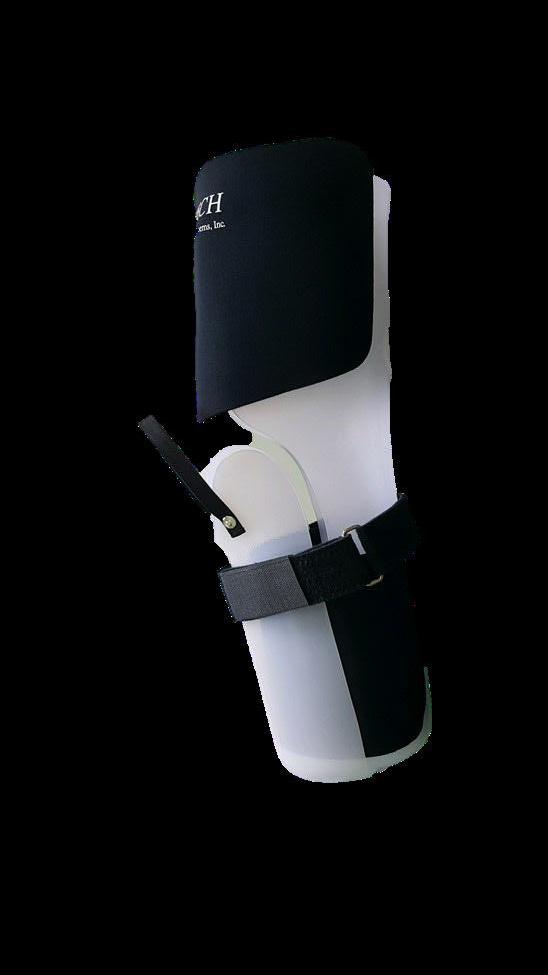
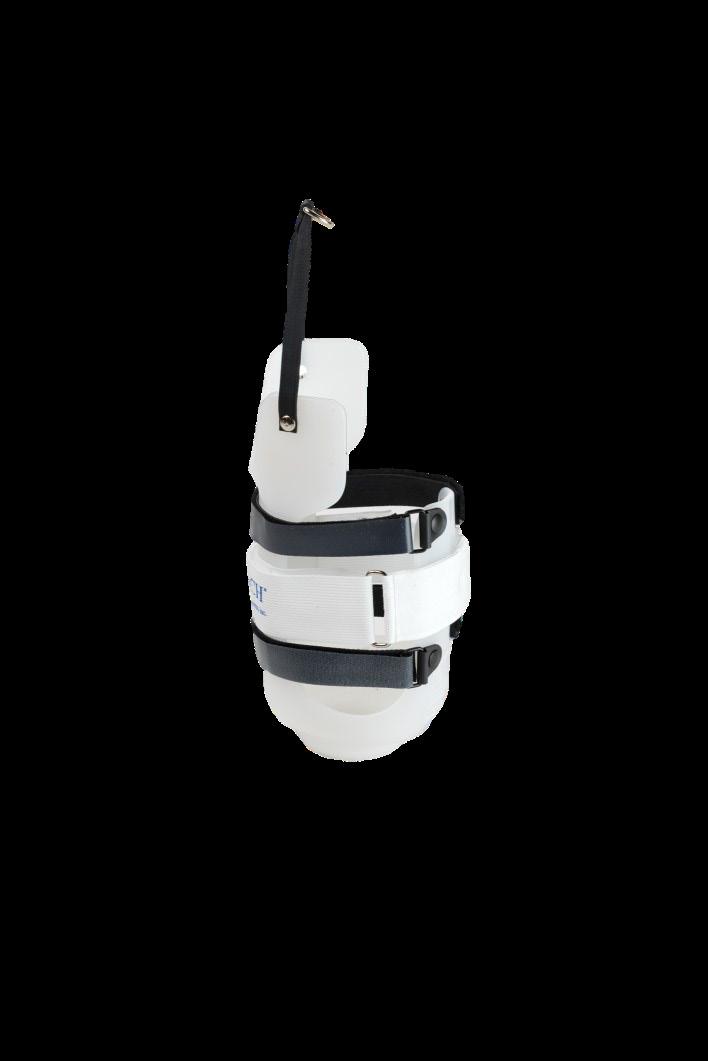
FLO-TECH-TOR ™ UFOS™
Distal pad set
Trans-Femoral Prep System
Trans-Femoral Waist Belt
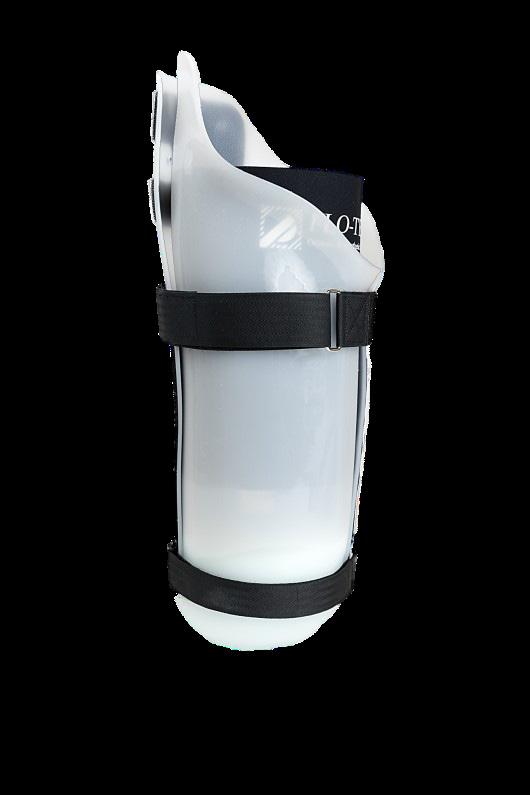
Distal pad set FLO-TECH-TOR ™
SOFTIE™
UFOS™
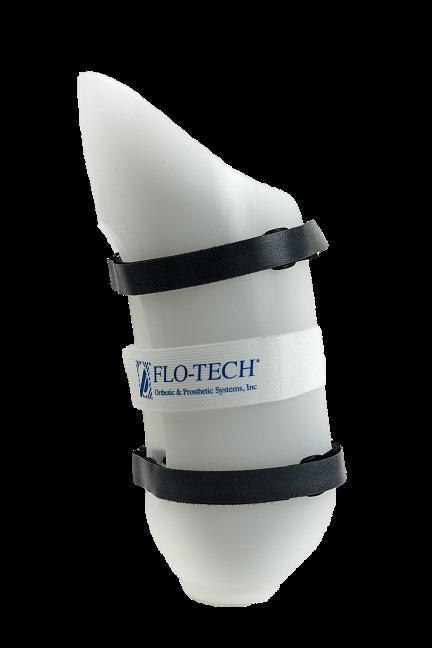
Trans-Tibial
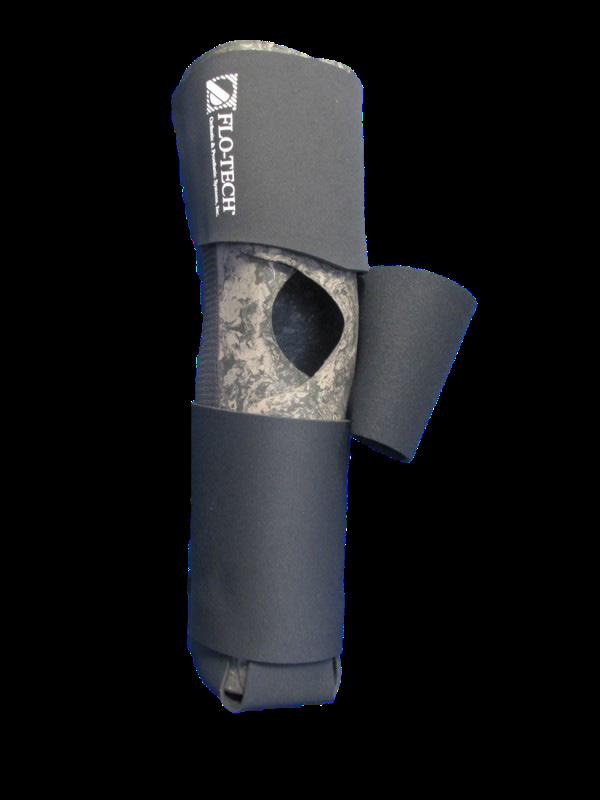
Trans-Femoral
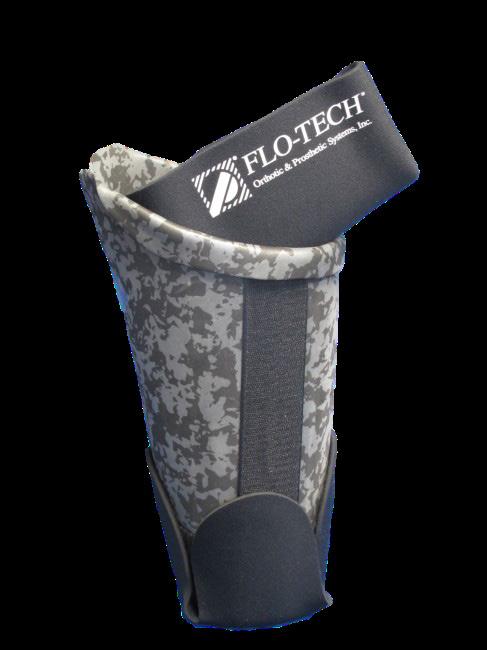
O & P Systems, Inc.

www.1800flo-tech.com 1-800-FLO-TECH (356-8324)
At Bush’s firm, “we are actively filing amended returns for people that have losses,” she explains. “We don’t know what the taxes are going to be in the future. But we can get them money back right now. This is probably the most significant kind of change that’s happened in tax rules and laws as a result of this crisis.”
New Rules for the Employee Retention Tax Credit Yet another benefit of the recent relief package is a more generous application of the Employee Retention Tax Credit. The credit in the CARES Act offered a 50 percent refundable tax credit (up to $10,000 total) for companies that kept employees on their payroll, whether they were open for business or not during COVID-19 lockdowns. That percentage has now been raised to 70 percent of qualified wages. Also, the initial version applied to qualified wages paid after March 12, 2020, and before Jan. 1, 2021, but the law enacted in late December extends that time frame to July 1, 2021, or the first two quarters of 2021.
Another change: Employers who accepted PPP loans can now also take the employer retention credit if the same wages are not used for both.
“In 2021, they extended the credit to continue for the first half of the year, and you can get up to $7,000 per quarter, per employee,” Bush says. “It’s a big credit.”
Overall, Bush characterizes the legislation Congress finally approved in late December as “more generous” to small and medium-sized businesses than what had been on the table during months of prior negotiation.
“They’re definitely doing some things to help the small-business person,” she says.
Michael Coleman is a contributing writer to O&P Almanac. EDITOR’S NOTE: This material is not intended, and should not be relied on, as legal advice. AOPA members should consult with their own CPAs and counsel about tax questions.








